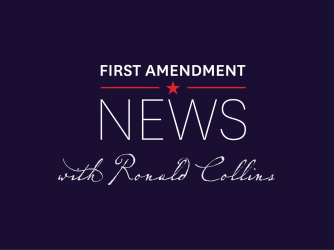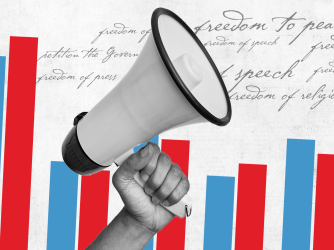Table of Contents
State AGs ignore First Amendment, lean on YouTube to remove label on abortion video
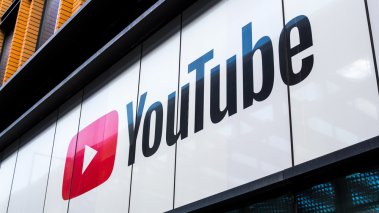
Alex Yeung / Shutterstock.com
Government officials just can’t seem to let social media companies, or the millions of Americans who use them, speak freely. This week, 16 state attorneys general sent a joint letter to YouTube demanding it remove a label added to a video about abortion.
In February, the legal advocacy group Alliance Defending Freedom posted a YouTube video of a woman describing severe pain and other symptoms suffered from taking abortion medication. She says she did not have a nurse or doctor and felt “completely abandoned.” According to the AGs’ letter, YouTube originally added a “context” notice under the video, purportedly based on information from the National Library of Medicine, which read: “An abortion is a procedure to end a pregnancy. It uses medicine or surgery to remove the embryo or fetus and placenta from the uterus. The procedure is done by a licensed healthcare professional.”
The letter claimed the last line is “false and misleading” because current U.S. Food and Drug Administration protocols allow a pregnant woman to take abortion-inducing drugs “in her house, her apartment, or even in her dorm room — unaccompanied by a healthcare professional of any kind.” The AGs threatened to exercise their “consumer-protection authority to protect pregnant women and other consumers from your falsehoods” if YouTube did not “immediately remove or correct” the label. YouTube subsequently revised the label to simply describe the two different methods of abortion.
The Court should clarify the law and put a stop to attempted government end runs around the First Amendment.
But whether the original information was true or false is beside the point. Government officials lack authority to order private platforms to remove constitutionally protected speech. And the First Amendment protects even false speech unless it falls into a narrow exception like defamation or fraud. None of those exceptions apply to YouTube’s original label. The AGs can exercise their “consumer-protection authority” to prohibit businesses from falsely advertising their own products, but that’s irrelevant — YouTube isn't selling abortion drugs.
This episode is yet another example of government officials trying to purge speech to which they object from the public sphere through informal pressure on private platforms and businesses. The Supreme Court now has a prime opportunity to limit this practice in two pending cases, Murthy v. Missouri and NRA v. Vullo.
Murthy concerns Biden administration officials’ repeated pressure on social media companies to censor speech on controversial topics like COVID-19 and the 2020 presidential election, often in the name of combating misinformation. As FIRE told the Court in our amicus curiae (“friend-of-the-court”) brief:
[T]he First Amendment problems addressed in this case are significant regardless of who is attempting to pull the levers behind the scenes. Although much attention has focused on the power of “Big Tech,” it is a bad idea for government officials to huddle in back rooms with corporate honchos to decide which social media posts are “truthful" or “good” while insisting, Wizard of Oz-style, “pay no attention to that man behind the curtain.”
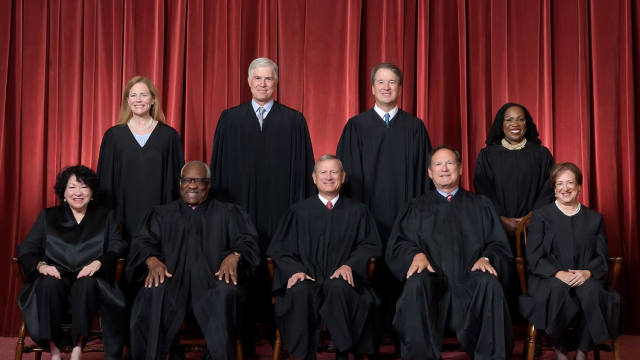
FIRE to Supreme Court: Stop government bullies from intimidating social media platforms
News
In a new friend-of-the-court filing, FIRE asks the Supreme Court to prevent government officials from coercing private social media platforms into censoring speech.
FIRE also filed an amicus brief urging the Supreme Court to reach the right result in Vullo, which involves a New York state official’s pressure on regulated banks and insurance companies to sever ties with the National Rifle Association due to its political advocacy. We explained that this pernicious form of informal censorship is all too common:
Indirect and informal methods of censorship have proliferated in recent years, with examples from across the political spectrum. While New York leaned on businesses to cut ties with the conservative NRA, Florida’s governor acted to revoke favorable tax status for what he called the “woke” Walt Disney Corporation because it had the temerity to oppose his education initiatives. State attorneys general have threatened retail stores for selling LGBTQ-themed merchandise, while governors have threatened “aggressive enforcement action” against both public and private colleges that fail to crack down on campus speech. Both then-President Trump and President Biden have threatened to revoke online platforms’ immunity under Section 230 of the Communications Decency Act due to their displeasure over company policies.
The Court should clarify the law and put a stop to attempted government end runs around the First Amendment. As we said in our Vullo brief, “This Court has forged strong substantive and procedural protections for freedom of expression, but those formal protections can be circumvented if informal speech restrictions are not kept in check. The First Amendment cannot become a Maginot Line.”
Stay tuned for oral arguments in both cases on March 18.
Recent Articles
FIRE’s award-winning Newsdesk covers the free speech news you need to stay informed.
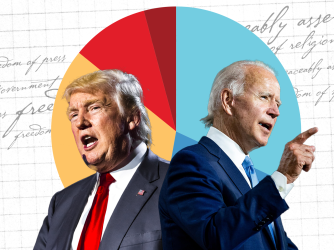
New FIRE poll: Americans equally skeptical Biden or Trump will protect First Amendment rights

Here’s what student journalists need to know about covering campus protests
